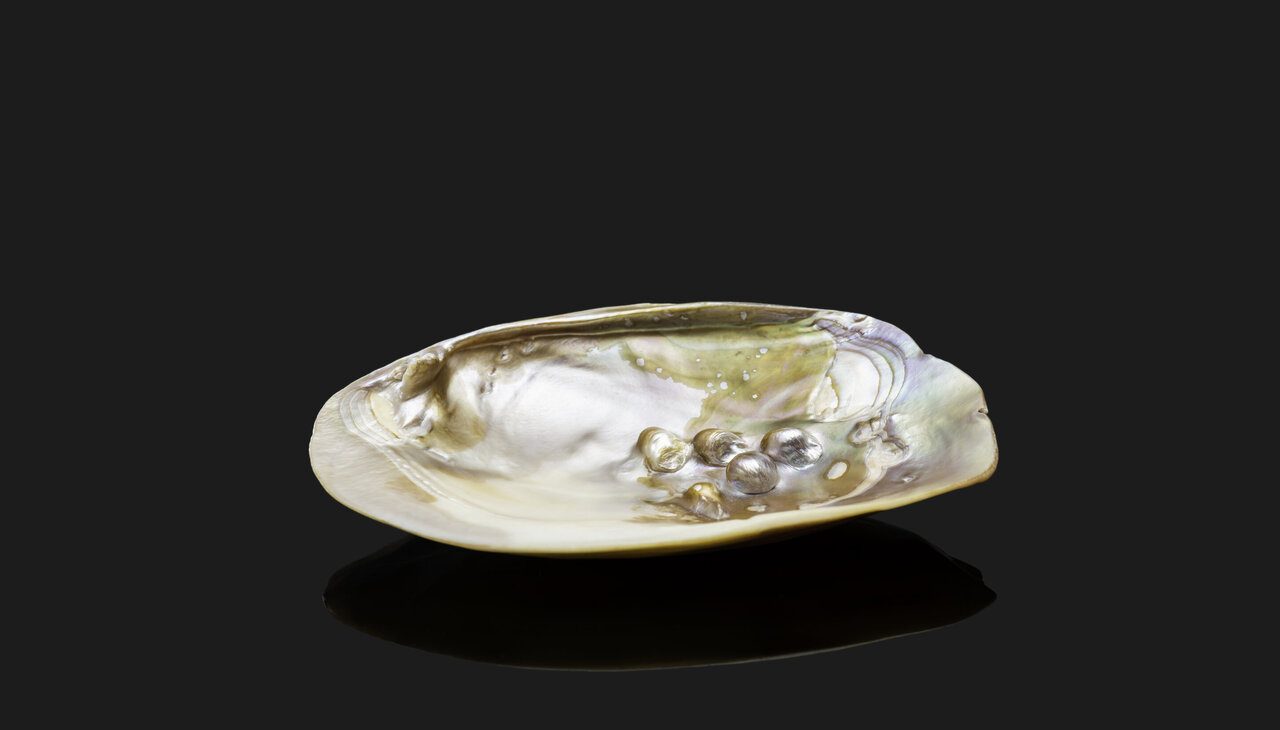- 8
- 2
We will be dalculating the amount of Energy required to pulverize different shells.
Abalone
Adults are stated to weigh between 1-2 pounds in weight (0.454 kg-0.907 kg), and their shell is 20-30% their weight, so...
Weight average: (0.454 kg+0.907 kg)/2=~0.68 kg
Percent average (0.2+0.3)/2=0.25 (25%)
Now, down to business...
Shell weight: (0.68 kg)(0.25)=0.17 kg
Now, the highly organized nacre makes abalone shells super tough, resulting in a fragmentation energy of 700-1200 J/kg. This property also gives abalones a Bond Work index of 35400 J/kg, based on aragonite properties, as abalone shells are natural aragonite.
Low-End:
Fragmentation: (0.17 kg)(700 J/kg)= 119 J (Athlete Level)
High-End:
Fragmentation: (0.17 kg)(1200 J/kg)= 204 J (Athlete level)
Pulverization (Exact Value)
(0.17 kg)(35400 J/kg)= 6018 J (Street+ level)
Hard Clam
Quahog clams weigh in at 2-3 clams per pound. This means, each clam can weigh between approximately 0.151 kg and 0.227 kg. To find the averages between these weights:
(0.151 kg+0.227 kg)/2=~0.19 kg.
Now, since the Quahog Clam has thick hard calcite layers in its shell, its fragmentation energy is approximately 400-700 J/kg. It's Bond Work index is approximately 5400-7600 J/kg.
Low-End:
Fragmentation: (0.19 kg)(400 J/kg)= 76 J (Human level)
Pulverization: (0.19 kg)(5400 J/kg)= 1024 J (Street+ level)
High-End:
Fragmentation: (0.19 kg)(700 J/kg)= 133 J (Athlete level)
Pulverization: (0.19 kg)(7600 J/kg)= 1444 J (Street+ level)
References
 www.biologicaldiversity.org
www.biologicaldiversity.org
Meyer, C. (2008). Abalone: Biology and Culture

 phys.org
phys.org
Aykol, O., Acar, M., & Canbazoğlu, M. (2010).
Abalone
Adults are stated to weigh between 1-2 pounds in weight (0.454 kg-0.907 kg), and their shell is 20-30% their weight, so...
Weight average: (0.454 kg+0.907 kg)/2=~0.68 kg
Percent average (0.2+0.3)/2=0.25 (25%)
Now, down to business...
Shell weight: (0.68 kg)(0.25)=0.17 kg
Now, the highly organized nacre makes abalone shells super tough, resulting in a fragmentation energy of 700-1200 J/kg. This property also gives abalones a Bond Work index of 35400 J/kg, based on aragonite properties, as abalone shells are natural aragonite.
Low-End:
Fragmentation: (0.17 kg)(700 J/kg)= 119 J (Athlete Level)
High-End:
Fragmentation: (0.17 kg)(1200 J/kg)= 204 J (Athlete level)
Pulverization (Exact Value)
(0.17 kg)(35400 J/kg)= 6018 J (Street+ level)
Hard Clam
Quahog clams weigh in at 2-3 clams per pound. This means, each clam can weigh between approximately 0.151 kg and 0.227 kg. To find the averages between these weights:
(0.151 kg+0.227 kg)/2=~0.19 kg.
Now, since the Quahog Clam has thick hard calcite layers in its shell, its fragmentation energy is approximately 400-700 J/kg. It's Bond Work index is approximately 5400-7600 J/kg.
Low-End:
Fragmentation: (0.19 kg)(400 J/kg)= 76 J (Human level)
Pulverization: (0.19 kg)(5400 J/kg)= 1024 J (Street+ level)
High-End:
Fragmentation: (0.19 kg)(700 J/kg)= 133 J (Athlete level)
Pulverization: (0.19 kg)(7600 J/kg)= 1444 J (Street+ level)
References
Natural history
Meyer, C. (2008). Abalone: Biology and Culture

Researchers create artificial mother-of-pearl using bacteria
The strongest synthetic materials are often those that intentionally mimic nature.
Aykol, O., Acar, M., & Canbazoğlu, M. (2010).